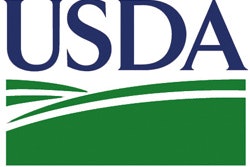CHICAGO, Ill. (PRNewswire) — Restaurants use online and email marketing to provide consumers the personalized offers they prefer, according to new research by the National Restaurant Association released today. The research found that electronic marketing channels complement traditional and offline channels as part of a successful marketing mix. Funded by an unrestricted research grant by LivingSocial, the study analyzed current marketing practices employed by restaurant operators and consumer perceptions of a range of marketing tools.
"Finding the right marketing mix is crucial to success in the restaurant industry," said James Balda, Chief Marketing and Communications Officer of the National Restaurant Association. "Our new research outlines the challenges and opportunities of both offline and online marketing to help restaurant operators find the 'sweet spot' for promotions by identifying what consumers respond to and how various messaging vehicles are perceived."
Key findings of the new research include:
Online marketing can elevate a restaurant's brand and attract new customers
- Restaurants that use online marketing (emails from restaurants, emails from a daily deal provider, and websites) tend to be viewed by consumers as modern (67 percent emails, 59 percent daily deals, 65 percent websites) and popular (63 percent, 59 percent, 63 percent). Restaurant operators perceive websites (90 percent), TV ads (87 percent), social media (84 percent), restaurant emails (82 percent), and daily deals (77 percent) as effective in bringing in new customers.
Customized marketing messages that address a consumer's preferences result in more sales
- Consumers and operators agree on the importance of savings in customized messaging.
- 87 percent of consumers would go to or order from a restaurant if provided with a savings offer.
- 95 percent of operators perceive savings offers to be an effective marketing tool.
- Consumers would go to or order from a restaurant if they received customized marketing messages that referenced past restaurant patronage (68 percent), allowed them to make reservations (66 percent), and identified them by name (64 percent).
Restaurants understand what marketing tools work; they just need to implement them
- 84 percent of restaurant operators consider restaurant-specific marketing emails to be effective in increasing revenue for their restaurants, and 78 percent of consumers said an email from a restaurant would motivate them to go to that restaurant. In addition, 63 percent of restaurant operators say they plan to use such emails in the next year.
- 78 percent of restaurant operators consider daily deals to be effective in increasing revenue for their restaurants, and 69 percent of consumers said an email from a daily deal provider would motivate them to go to the restaurant featured in the daily deal. In addition, 40 percent of operators say they plan to work with a daily deal provider in the next year.
Consumers are very sensitive to social media and Internet advertising
- Consumers perceive the least effective efforts to entice them to go to a restaurant include online advertisements (58 percent), social media (56 percent), and radio ads (56 percent).
"Many restaurant owners feel overwhelmed by the wide range of marketing options available to them," said Mandy Cole, SVP of Sales, LivingSocial. "We partnered with the National Restaurant Association to conduct this study to see which tools are most effective at increasing revenue and improving business for restaurants. Working together with our thousands of restaurant partners, we look forward to turning these findings into actionable steps to help restaurants improve their marketing efforts."
Full results are scheduled for release today, May 7, at the 2012 National Restaurant Association Restaurant, Hotel-Motel Show in Chicago, Ill. The session, "Myths vs. Facts: How Online Marketing Can Benefit Your Restaurant's Bottom Line" will be held from 2:00 – 3:30 p.m. in room S402A. For more information and to review the full findings, please visit www.restaurant.org/onlinemarketing.
The study is based on an online survey of a nationally representative sample of 1,064 adults in February 2012, and telephone interviews with 425 restaurant owners and operators nationwide in February-March 2012.
About the National Restaurant Association
Founded in 1919, the National Restaurant Association is the leading business association for the restaurant industry, which comprises 970,000 restaurant and foodservice outlets and a workforce of nearly 13 million employees. We represent the industry in Washington, D.C., and advocate on its behalf. We operate the industry's largest trade show (NRA Show May 5-8, 2012, in Chicago); leading food safety training and certification program (ServSafe); unique career-building high school program (the NRAEF's ProStart, including the National ProStart Invitational April 27-29, 2012, in Baltimore, Md.); as well as the Kids LiveWell program promoting healthful kids' menu options. For more information, visit www.restaurant.org and find us on Twitter @WeRRestaurants, Facebook and YouTube.
About LivingSocial
LivingSocial is the online source for discovering valuable local experiences. We inspire our members to find, share, and enjoy the best of their neighborhoods by connecting them with handpicked local businesses. With new and diverse offerings each day, we encourage members to discover everything from family aquarium outings to weekend excursions to exclusive gourmet dinners and more. We help great local businesses grow by introducing them to high-quality new customers, and give merchants the tools to make our members their regulars. Based in Washington, D.C., LivingSocial now has more than 65 million members in 22 countries.






















